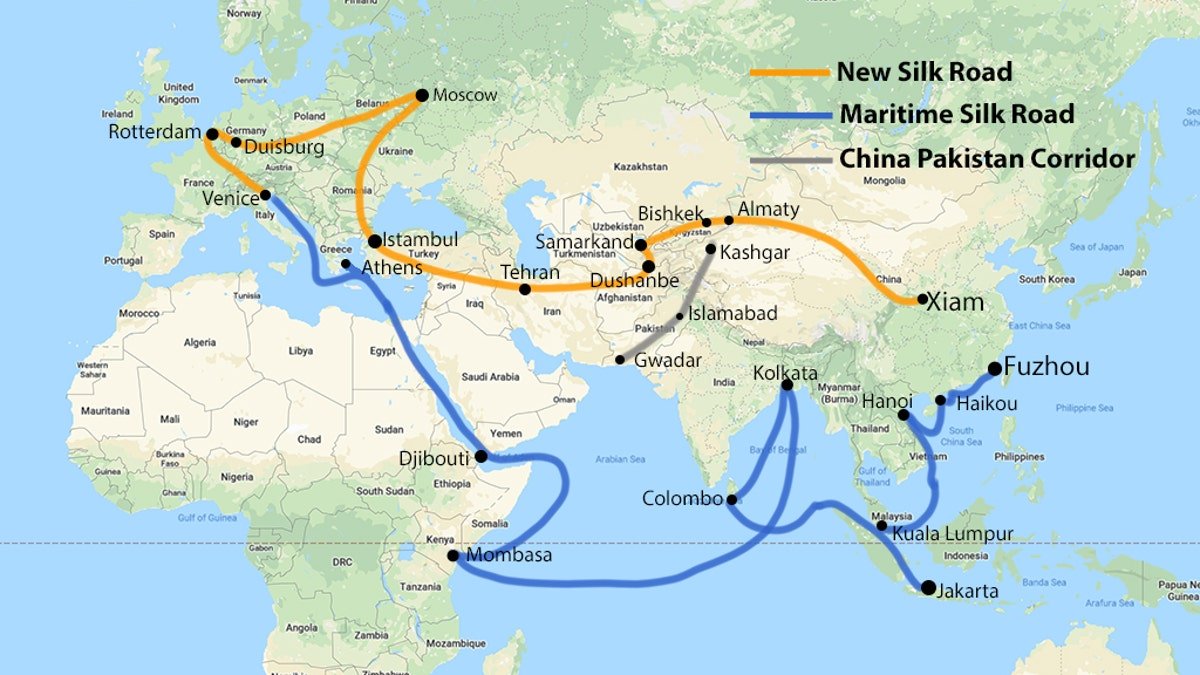Biden, BRI, Beijing: The New Cold War
History doesn’t repeat itself, but it rhymes. More than 30 years after the end of the U.S.-Soviet Cold War, a new competition between the United States and China closely resembles the Cold War of the late 20th century. Although differences exist between the two conflicts, the similarities help identify potential strategies and provide a set of parameters for studying the two nations’ power struggle. Given the similarities between past and present cold wars, the United States and China are headed towards a new cold war because the United States wants to maintain its global economic hegemony through non-military means in an effort to stop China’s rise in economic, diplomatic, and military power.
The new Sino-American cold war is fought over global economic control, because economic capacity grants a nation power— from the UN General Assembly to the battlefield. In recent years, China has ventured to reshape the world economy with Beijing at its center. In 2013, Chinese General Secretary Xi Jinping announced the Belt and Road Initiative, which seeks to create a land “belt” and a maritime “road” of trade which will foster commerce and economic cooperation between China and Asia, East Africa, and Eastern Europe. Despite the undeniable importance of economic power, many scholars are quick to point to its larger implications in a cold war setting. University of Chicago Professor John J. Mearsheimer observes: “Population size and wealth are the main building blocks of military power, so there [is] a serious possibility that China might become dramatically stronger in the decades to come. Since a mightier China would surely challenge the U.S. position in Asia and possibly beyond, the logical choice for the United States [is] clear: slow China’s rise” (Mearsheimer 1). Aside from securing China vital natural resources, the Initiative brought about a level of economic interdependence which won China allies. Thus the United States must contain China and its rise before it gains too many allies and grows too powerful, for once it gets large enough it will be impossible to stop alone. Indeed, Mearsheimer calls the “prospect of China as an economic colossus” a “nightmare” (Mearsheimer 3).
Though marked by distinctive differences, the U.S.-Soviet Cold War validates the nature of the new cold war and provides a historical precedent upon which to create policy. Even in a modern age, 30 years from the end of the Cold War, history, according to theorist John L. Gaddis, “provides a framework within which to survive uncertainty” even if the story of the new cold war does not align with that of the U.S.-Soviet Cold War (Gaddis 2). The strategy of containment, for example, as developed by American strategist George F. Kennan at the outset of the Cold War, can be used to slow China’s economic growth through trade wars and tariffs.
George F. Kennan.
Similarities between American opponents also exist. Like the Soviet Union, trying to rival great powers from the ash-heap of revolution and tsardom, China is also driven to fix its image in the aftermath of its “century of national humiliation.” After ceaseless foreign intervention, political upheaval, and war, China is tired of being pushed around; now they are eager to do the pushing. Though the Belt and Road Initiative is indicative of a large Chinese economic venture, Gaddis notes that “The potential for tails wagging dogs in the Sino-American cold war is already evident… while China is trying, through the BRI, to create a system that maximizes its power, it may end up building, through its relationships with insecure and unstable regimes, just the sort of inverse dependency that vexed the Cold War superpowers” (Gaddis 13). It will be best, then, to contain the spread of the Chinese web of economic interdependence as much as possible and let Chinese strategic shortcomings corrupt Beijing's plans. Indeed, Gaddis notes that Xi’s threats to Taiwan could have a similar effect in states surrounding China, which may in turn look for their own “openings” to Washington” (Gaddis 10).
Conversely, China believes that the United States, split by fractious political parties and racial tensions, is bound to fail, as former Australian Prime Minister Kevin Rudd notes: “Underneath all these strategic choices lies Xi’s belief, reflected in official Chinese pronouncements and CCP literature, that the United States is experiencing a steady, irreversible structural decline” (Rudd 8). While formulating containment in 1946, Kennan noted the symmetry in ideological opposition—that both sides thought the other would inevitably fail, and that the best plan was to expedite their failure in the least costly manner possible. Thus, the U.S.-Soviet Cold War is an important aid when analyzing the conflict. The symmetry between the strategies of the United States and Soviet Union closely resembles that of the U.S. and China—indicating the nature of the Sino-American conflict as a new cold war.





